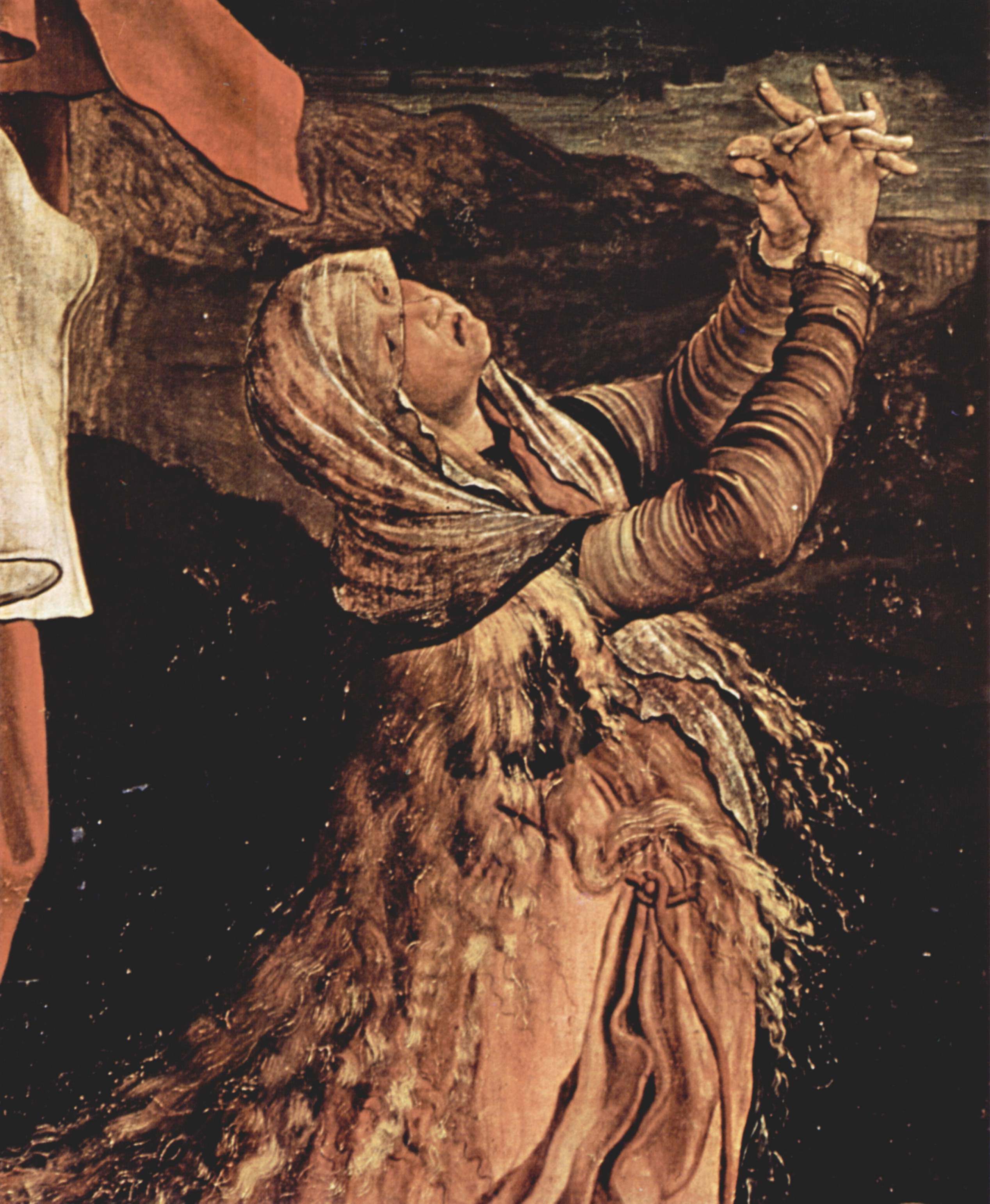 |
| Christopher Rouse: press photograph |
The rousing Ku-Ka-Ilimoku was the opener, a piece intended to evoke a Hawaiian war god, and also, according to Rouse's comments from the stage, to "bring back the allegro with a vengeance" and inject contemporary composition for percussion with a healthy respect for the principle of "banging the heck out of things." I loved the creativity of it, and the musicians handled the nuances of tempo, rhythm, and dynamics with verve, as well as banging the heck out of an exciting variety of instruments. The audience nodded their heads in time, some getting to the edges of their seats. A student a few seats down from me was making enthusiastic drumming movements in his lap. When it ended there was shrieking among the applause.
 |
| Mary Magdalene: detail from Isenheim Altarpiece |
After the head-clearing interval, the Calder Quartet performed the New York premiere of Rouse's String Quartet No. 3 with both virtuosity--a word much bandied in the program notes--and verve. Dizzying speeds and complex rhythms (at least to my untrained ear) characterized much of it, but there were also opportunities for the players to display lyricism. The thoroughness of the program notes was admirable; I still felt a little lost, but I think perhaps this was the desired effect? I kept hearing echoes of Tristan and Bluebeard. The Calder Quartet had great sound and displayed great skill. Here Christopher Rouse explains it better, with some excerpts of the piece. Concluding the concert was "Compline," a 1996 work, which Rouse singled out in his remarks for having been the first piece in several years he had been able to compose while not in the shadow of a loved one's death. From the title, I had simplistically expected something lyric and largo. What I got was a "Compline" of complex textures, very much aware of the sorrows of the world and the snares of the devil, of the myriad ways humans clamor to distract ourselves from darkness and death, but also looking forward to the light of eternity. The busy chatter of the opening was quieted by bells; a cello spoke with a voice that could have been that of a priest. There was still a great deal of tumult, but it eventually emerged into a radiant peace.
No comments:
Post a Comment
Start a conversation!